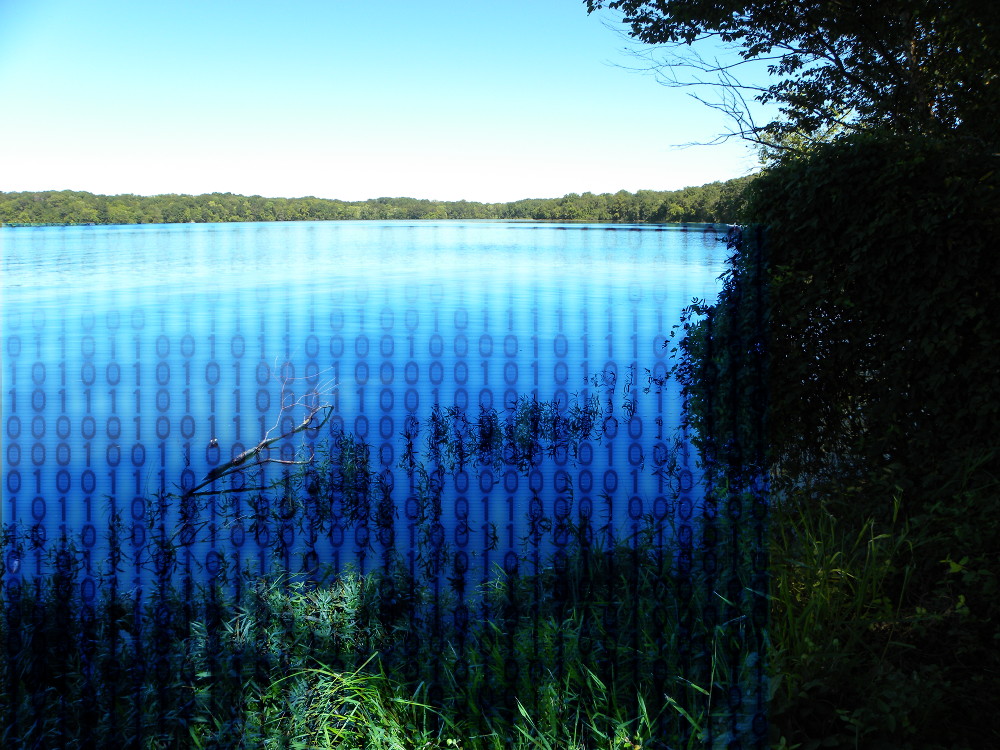Just as we do with our personal data, many companies prioritize safety alongside accessibility when deciding what to do with their data. While these things are always important, regardless of if you have one gigabyte of storage or one hundred thousand, they’re undoubtedly more important for the company than for the individual. This is because it’s not only their data they have to keep safe, but the data of their customers as well. For this reason, companies can’t just stick with an external hard drive or a simple cloud storage service — they need a storage solution that can handle large amounts of data of all shapes and sizes while also providing them with some important insight. One such example of this is a data lake.

What Is a Data Lake?
In simple terms, a data lake is an enormous digital reservoir that can store large amounts of raw data in its native and respective format while also providing some sort of audit of said data. In fact, an image of a lake is actually a pretty accurate visualization of what a data lake acts like: data types of all shapes and sizes are simply tossed into the data lake and stored without the need for any sort of file conversion (just like how you could toss a rock, a stick, and a fish all into a lake and it’d all end up in the same place, sinking or floating in the water).
Following that same thinking, a data lake acts similarly: No matter if it’s structured data in the form of a spreadsheet or from a database, semi-structured data like XML or JSON, unstructured data like emails and documents, or binary data like audio or videos, a data lake will accept and store it and analyze all regardless of format.
This differs from a data warehouse in a few key aspects: For one, data warehouses operate using groups of smaller datasets to maintain top speeds. Data lakes do away with this, which sacrifices speed somewhat but allows for all data to be presented in one space instead of various subsets. A data warehouse will require less storage for a given breadth it covers (number of widgets, customers, etc.) due to its structure, narrower focus, and higher level of curation. A data lake requires more storage for that same breadth that is covered to allow for all data to be presented holistically in one space and in original files including various formats with less overall structure. It could be the difference between a few terabytes versus a few petabytes. Users could use both storage patterns if they felt like it.
What Are the Benefits of a Data Lake?
Data lakes are hugely beneficial because they allow for companies with large amounts of data to centralize everything in one place, even if it doesn’t all fit nicely together in one uniform format. All too often, a company has to split up their structured data, their semi-structured data, their unstructured data, and their binary data across multiple storage spaces and hop from platform to platform in order to do reports, analytics, and visualizations.
With a data lake, companies can view all their data in one place and make those comprehensive and hugely insightful observations much more accurately without running the risk of missing anything important stored somewhere else. When running a business, especially a large one with a truly substantial amount of data across various formats, this insight is an invaluable thing to have: It informs future decisions about the company’s path forward by displaying trends that let leaders know what’s working best and what could use improvement.
Are Data Lakes Safe?
Because data lakes are such a new, up-and-coming technology in the world of data storage, there are some valid concerns about whether or not data lakes are as safe as some of the aforementioned storage solutions. After all, safety is just as important as ease, right? You certainly wouldn’t want some pesky virus or dastardly malware coming along and doing a virtual cannonball into your data lake.
The short answer is that your data is always facing the threat of a safety risk, and companies must always make sure they’re taking proper safety precautions with their data because of this. This includes always encrypting your data and only downloading data from safe, reputable places that you can trust. This way, you can ensure your company’s most precious information is protected from both the outside and the inside.
The Bottom Line: Don’t End up with a Data Swamp
While data lakes are clearly a useful and unique business tool for their ability to centralize data across multiple formats and display that data in an insightful way, it’s important to make sure that you keep your data lake safe and — perhaps just as importantly — organized in a concise manner. The last thing you want is your data lake turning into a data swamp, where data is disorganized and messy, impossible to parse through, and as result much less useful.
While research continues to be done on data lakes and the emerging technology continues to become more well-known in the world of data, one thing remains true: the opportunity to centralize data of all different types in their original formats in one convenient location that can also provide key insight is definitely something worth looking into.





